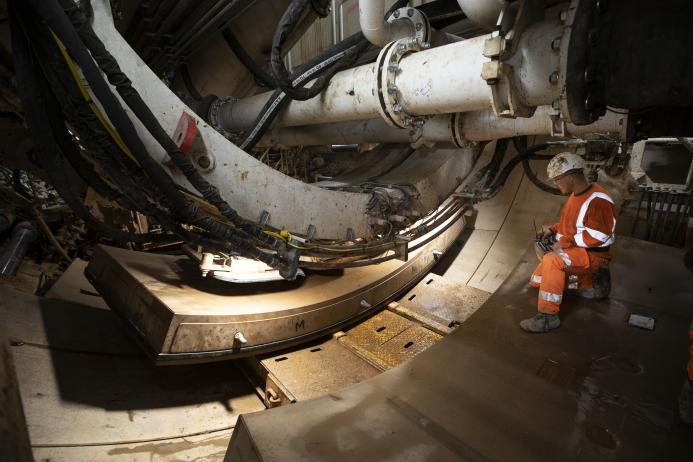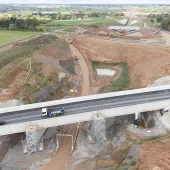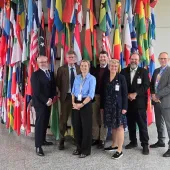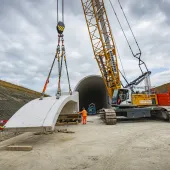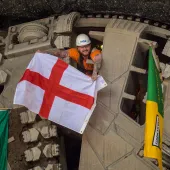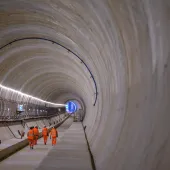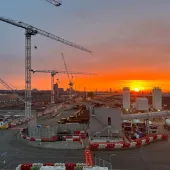HS2 reach halfway point on Bromford Tunnel
HS2 has reached a significant milestone in its tunnelling work in Birmingham. The tunnel boring machine (TBM) named ‘Mary Ann’ has now completed half of its 5.6km journey to construct the Bromford Tunnel. This TBM, which weighs 1,600 tonnes, has excavated 2.8km of tunnel since it began its journey from Water Orton last year.
‘Mary Ann’ is currently moving 40m underground towards Washwood Heath in Birmingham, having already tunnelled under the Park Hall Nature Reserve and the River Tame, and is now passing beneath Castle Vale. It will continue its path under the M6 motorway, with a planned breakthrough at Washwood Heath early next year.
The Bromford Tunnel is being lined with approximately 20,000 concrete segments. These segments are assembled into rings within the tunnel to provide structural support and ensure safety. The completed tunnel will consist of 2,971 concrete rings. A specialised team, working in shifts around the clock, has been operating the TBM and installing these segments as the machine progresses.
A key feature of the tunnel’s construction is a 47m-deep ventilation shaft at Castle Vale, marking the halfway point of the TBM’s journey. This shaft, which has a diameter of 18.6m, will eventually include cross passages to connect the two tunnels and provide ventilation, servicing, and emergency access. The entire structure, including a 'headhouse' on top of the shaft, is expected to be completed by 2027.
A second TBM, named ‘Elizabeth,’ began work on the tunnel’s second bore in March 2024. It is scheduled to complete its journey by the end of 2025. Together, the two TBMs will remove 1.87 million tonnes of excavated material. This material is being processed on-site and reused at nearby construction sites, such as the Delta Junction, where a network of 13 viaducts is being built. Dedicated access roads have been constructed to minimise the impact on public roads.

In preparation for the TBMs’ arrival at Washwood Heath, an extensive earthworks operation was carried out by a team of 130 people to build the tunnel’s west portal. This portal, situated 22m below ground, is the deepest of the four tunnel portals on the Midlands section of the HS2 route. The portal leads to a 750m-long cut and cover structure, currently under construction, where HS2 trains will transition from the tunnel to ground level before continuing on viaducts towards Curzon Street Station in Birmingham.
Steve Powell, HS2’s head of delivery, highlighted the progress, stating: “We’re now at peak construction in the West Midlands, and it’s great to celebrate the halfway point for the ‘Mary Ann’ tunnel drive into Birmingham. By the end of next year, both of these tunnels will be built, marking a significant step in HS2’s construction in the region.”
The tunnelling work has been carried out by a skilled team of 180 workers, including ten apprentices from local areas, employed by Tunnelcraft and Solihull-based Rorcon. This effort is part of a broader initiative, with over 31,000 people currently working on HS2, including many from the West Midlands.
Jules Arlaud, tunnelling director for Balfour Beatty VINCI, noted the achievement, stating: “Reaching the halfway point on this complex stretch of the HS2 route into Birmingham is a great milestone for our 180-strong tunnelling team.”
Once completed, the HS2 high-speed line will connect London to the West Midlands, significantly reducing travel times and increasing capacity on the UK’s rail network. This project aims to alleviate congestion on the West Coast Main Line, enabling more local and freight trains to operate.

